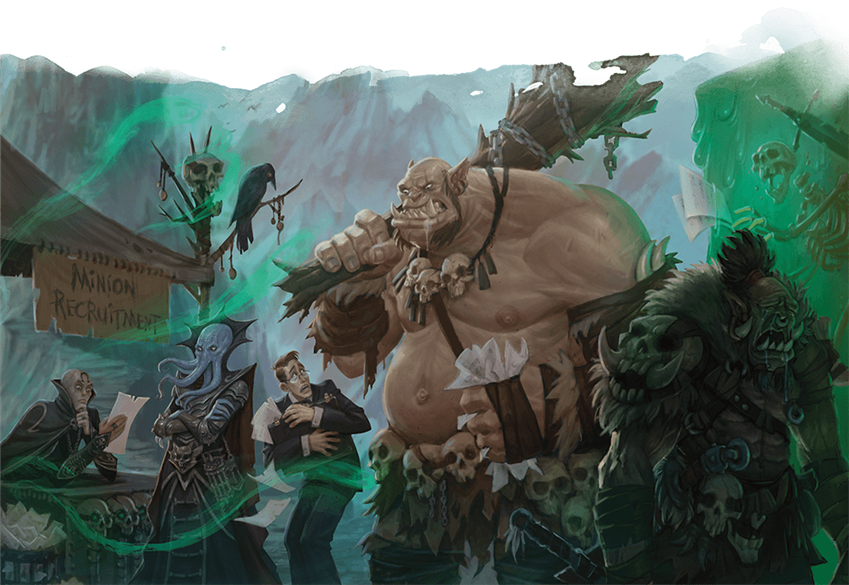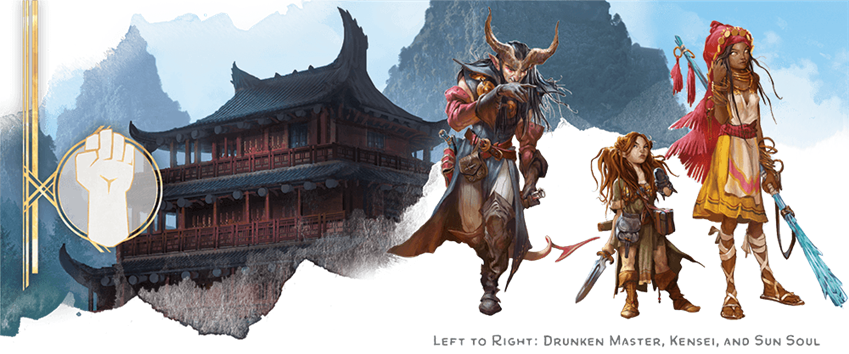Last Updated on November 3, 2023
From powerful new subclasses to traps, random encounters, and running rival adventuring parties, Xanathar’s Guide to Everything is packed with new rules, content, and advice for both players and dungeon masters to use in their Dungeons & Dragons 5e campaigns.
Table of Contents
Key Takeaways
Xanathar’s Guide to Everything is a rules supplement for D&D 5e that adds…
- 31 new subclasses with at least one new option for every class.
- New tools for dungeon masters including traps, toolkits (like alchemist’s supplies, cook’s utensils, and a disguise kit), adamantine weapons, and spellcasting areas of effect.
- Revisited advice for building balanced encounters and random encounters.
- Expanded downtime activities.
- 95 new spells.

What Is Xanathar’s Guide to Everything?
Released in 2017, Xanathar’s Guide to Everything was the first major rules supplement for Dungeons & Dragons 5e to build upon the contents of the Player’s Handbook and Dungeon Master’s Guide.
The book contains expanded rules for making adventurers — including new subclasses, feats, and narrative options for fleshing out character backstories — as well as new rules and tools for dungeon masters and 95 new spells, mostly for the Druid class
As a rules supplement, it is widely considered to be the D&D 5e sourcebook that all dungeon masters should buy after acquiring the Player’s Handbook, the Dungeon Master’s Guide, and the Monster Manual.
Who Is Xanathar?
Xanathar is a beholder gang boss who rules a sizable chunk of the criminal underworld in the city of Waterdeep. His name is actually a title, although very few members of the eponymous Xanathar Guild know that they’ve actually served a string of beholders going back centuries and that the current megalomaniac — whose only friend and confidant is his pet goldfish, Sylgar — is merely the last in a long and equally deranged line.
As we explore in our full guide, all beholders are raging paranoids and obsessive collectors in equal measure. Some collect vast menageries of monsters while others accumulate gold, art, or magic items; Xanathar collects knowledge about the world, seeking to somehow learn “everything” in the multiverse. Perhaps then, the beholder’s paranoia will be assuaged…
What’s in Xanathar’s Guide to Everything?
Like most D&D 5e sourcebooks, Xanathar’s Guide to Everything is broken up into three sections with materials for players and dungeon masters being the focus of sections one and two, respectively. The third section focuses on spells. There is also an introduction and several appendixes.

Chapter One: Character Options
Organized by class, the majority of content for players in this book takes the form of new subclasses with at least one option for each of the 12 core classes. The Rogue gets the most with 4 new Roguish Archetypes, and the wizard gets the least with just one. Some classes get other new rules as well, like new eldritch invocations for Warlocks and ways of learning new beast shapes for Druids.
Next, there is a sizable section with optional rules and dozens of random tables for building your character’s backstory, including who their parents are, where they were born, and origin stories for all the major Backgrounds found in the Player’s Handbook.
Lastly, the section concludes with rules for new Racial Feats, like Elven Accuracy and Orcish Fury.
New Subclasses – XGtE
- Barbarian: Path of the Ancestral Guardian, Path of the Storm Herald, Path of the Zealot
- Bard: College of Glamour, College of Swords, College of Whispers
- Cleric: Forge Domain, Grave Domain
- Druid: Circle of Dreams, Circle of the Shepherd
- Fighter: Arcane Archer, Cavalier, Samurai
- Monk: Way of the Drunken Master, Way of the Kensei, Way of the Sun Soul
- Paladin: Oath of Conquest, Oath of Redemption
- Ranger: Gloom Stalker, Horizon Walker, Monster Slayer
- Rogue: Inquisitive, Mastermind, Scout, Swashbuckler
- Sorcerer: Divine Soul, Shadow Magic, Storm Sorcery
- Warlock: The Celestial, The Hexblade
- Wizard: War Magic
Chapter Two: Dungeon Master’s Tools
The next chapter deals with a miscellany of tools that expand upon (and in some cases revise or provide alternatives to) the Dungeon Master’s Guide.
In addition to quick quality of life rulings on everything from Adamantine Weapons and tying knots to making tool proficiencies more appealing to players, Chapter Two devotes most of its attention to three main areas…
Random Encounters: There’s no actual advice in this section, just random tables for a variety of terrains, including arctic, coastal, desert, forest, grasslands, hills, mountains, swamps, Underdark, underwater, and urban.
This is a shame because random encounters don’t exactly feel at home in the more narrative and character-driven era of 5e (versus the exploration and problem-solving days of yesteryear), and I think DMs could benefit from a little reflection on why they might want to include random encounters in their games.
But no, it’s just random tables, mostly populated by hostile wandering monsters with no information on what they’re doing or how to run them other than Pokemon style “a wild Chimera appears… Fight!” Ah well.
Traps: It’s not the greatest advice in the world, but it’s better than nothing. Also, this section contains a number of simple (think bear trap or the old pit covered with leaves) and complex (magical vortexes and animated statues needing to be color-coded) traps.
Downtime: What happens between adventures. XGtE expands previous downtime rules with options for buying magic items, carousing (an old favorite from the 1970s), pit fighting, magical research, training, and (if all else fails) getting an actual job. The section also contains advice for creating a rival adventuring party of NPCs to antagonize and motivate your players.
Chapter Three: Spells (Plus Appendices)
Lastly, there’s a whole pile of new spells for every spellcasting class with Druids getting the biggest boost to their spell list.
This is followed by DM advice for running Shared Campaigns in which players take turns GM-ing short one-session adventures on a rotating basis or in which the cast of characters changes each session when you have an open table.
All told, there’s some solid advice here, especially the system by which different players can trade in treasure for points they can then spend on magic items.
Lastly, there’s a huge series of random tables full of character names for humans and nonhumans in the Forgotten Realms.
I played my first tabletop RPG (Pathfinder 1e, specifically) in college. I rocked up late to the first session with an unread rulebook and a human bard called Nick Jugger. It was a rocky start but I had a blast and now, the better part of a decade later, I play, write, and write about tabletop RPGs (mostly 5e, but also PBtA, Forged in the Dark and OSR) games for a living, which is wild.
